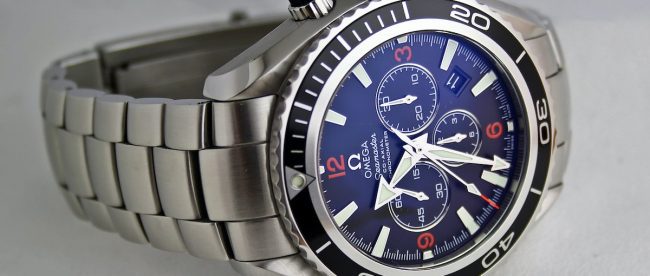The anatomy of a diving timepiece, explored
What makes a ‘good’ diving watch? We explore their beauty, elegance, and what makes them more than just a tool…
Watches are fascinating things. It is easy to understand the passion with which watch enthusiasts and hobbyists add to their collection. Watches are simple and elegant tools, but can also be endlessly complex, both mechanically and aesthetically.
Watches are simple and elegant tools, but can also be endlessly complex
Of course, dive watches today are altogether outmoded by digital technology; divers now wear diving computers to more accurately and effectively track everything from time spent underwater to depth and air pressure in their oxygen tanks.
But dive watches remain popular, not only to watch collectors but also to professionals looking for a robust and reliable analogue timepiece. As such, renowned watch brands like Omega continue to craft dive watches with close attention to detail. But what constitutes a “good” diving watch?
Water resistance
The most essential attribute a diving watch needs to demonstrate is water resistance. This might seem like an obvious attribute, but it is nonetheless vital. True dive watches should be rated as water-resistant to 200 metres, in order to facilitate safe dives at standard depths. However, dive watches with shallower water resistance rates are available.
… a watch with a 100m rating can in fact continue to operate if taken – albeit carefully – down to 125m
It is important to note that water resistance ratings do not describe the absolute maximum depth a timepiece can reach before failure. Rather, watches are tested to depths 25% higher than their final rating; as such, a watch with a 100m rating can in fact continue to operate if taken – albeit carefully – down to 125m.
It is also important to make a distinction between water resistance and splash resistance. Waterproofing measures are much more common today than they once were, with consumer technology offering splash resistance as standard – but diving watches are designed to survive full, extended submersion without suffering negative consequences.
Dive watch bezel
Another key feature boasted by proper dive watches is its rotating bezel, which is much more than a satisfying fidget tool for bored wearers. The bezel is used by divers to keep track of the time they have spent underwater, and the time they have left before their oxygen tank becomes dangerously low.
… if the bezel is knocked, it can only move in such a way as to make the diver surface sooner
The bezel is typically unidirectional, which means it ratchets in one direction and cannot be turned the other way. This is a safety feature designed to fool-proof any diving expedition; if the bezel is knocked, it can only move in such a way as to make the diver surface sooner.
Corrosion resistance
Lastly, the internal workings of the dive watch are not the only parts that need to be protected from the impacts of water. If a dive watch was fitted with standard strap materials, or its chassis constructed from unsuitable metal, it would not be long before it failed – or was lost to the waters.
Dive watch chassis today are typically constructed with a 316L grade or equivalent stainless steel, that rejects corrosion and increases the longevity of the watch underwater. The strap materials need to be similarly resistant to water’s influence, and also hardy enough to remain on the wrist; rubber is a common candidate in today’s diving watches.

Lana can usually be found spinning her collection of records, or writing odd poems in her phone notes. Her mixer of choice is a ginger beer, and you’ll never find her away from the sea for more than a few weeks.



Leave a comment